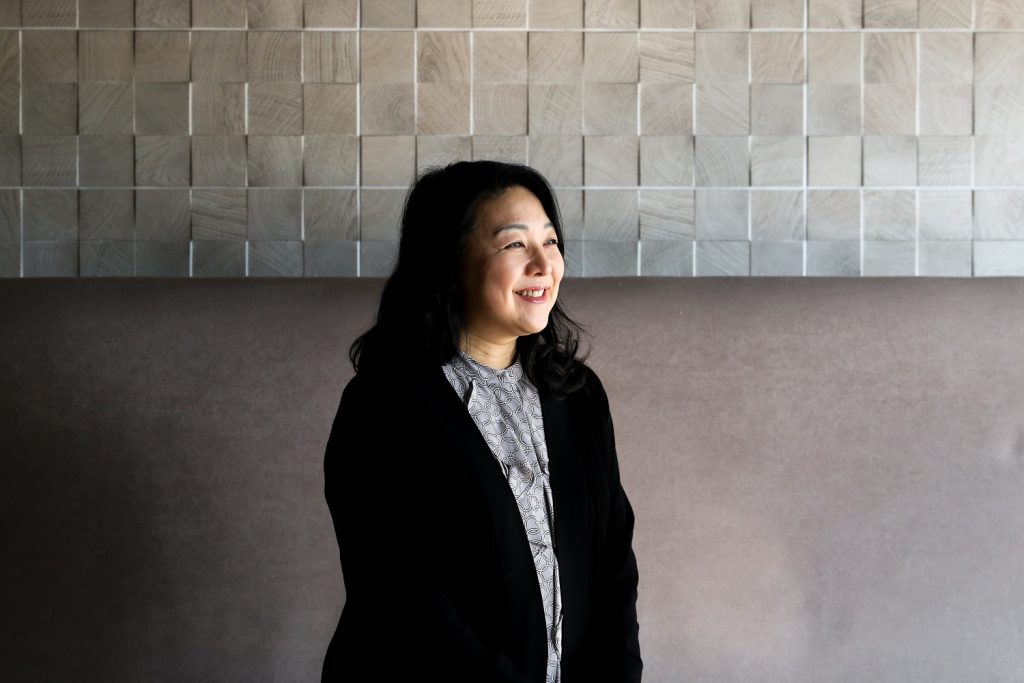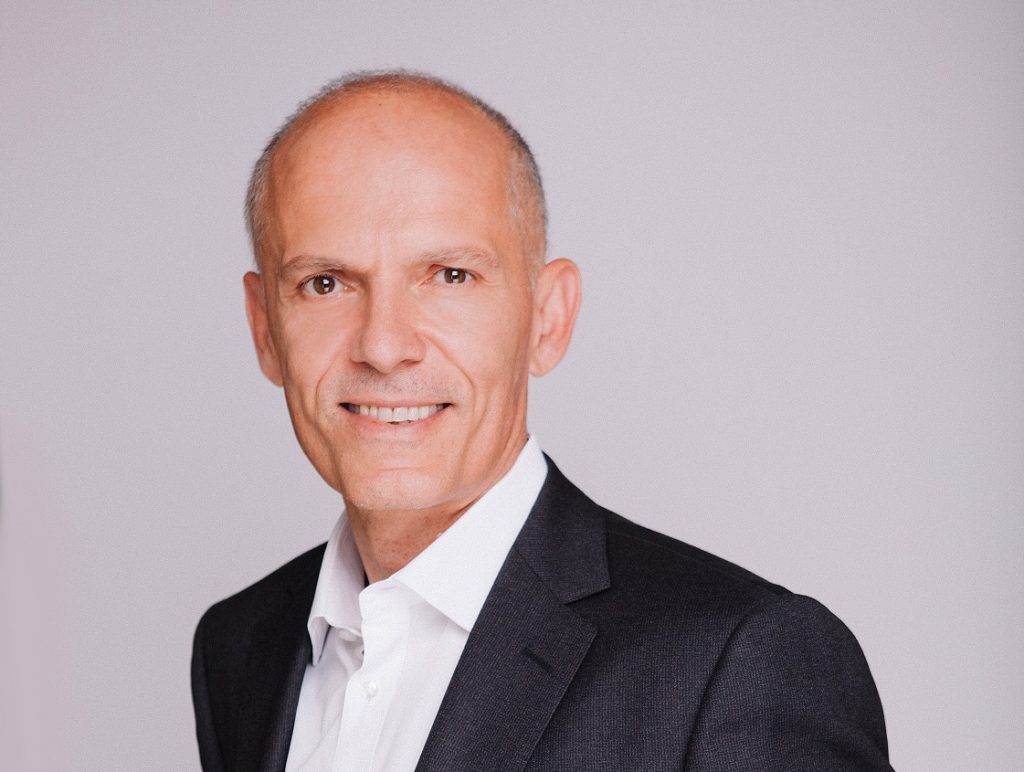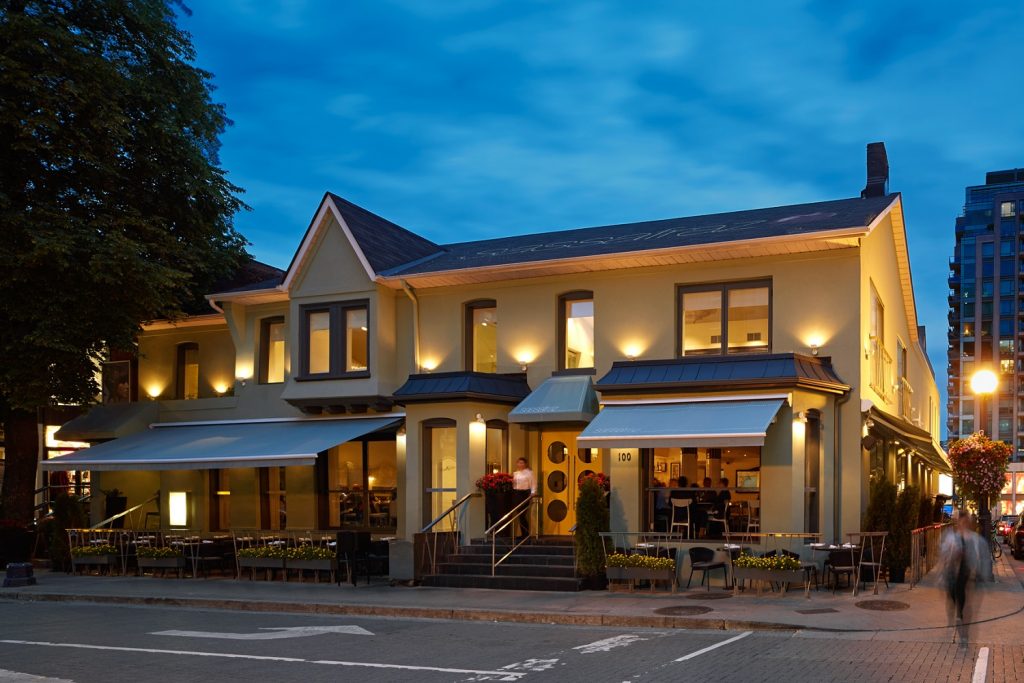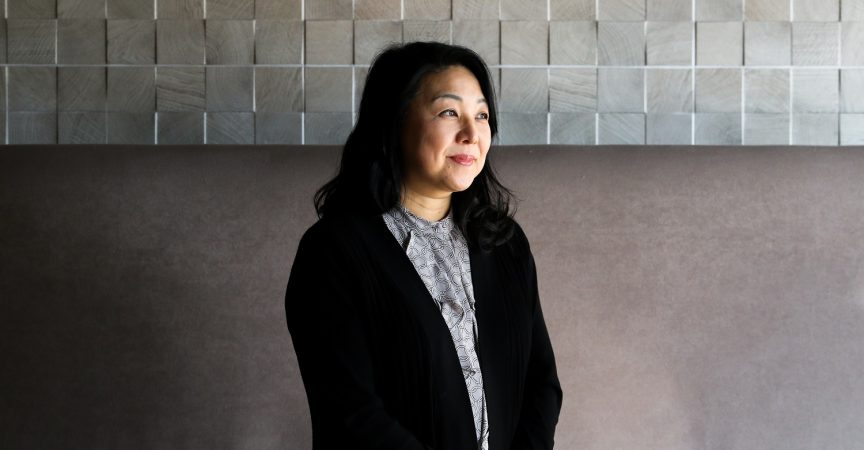The View From Here: Restaurant veterans share their best practices from weathering the storm
MENU sat down with three foodservice industry veterans to chat about the state of the industry, what the current landscape looks like, and how they’re adapting for the future.
Iori Kataoka –Co-owner/Sake Specialist, Yuwa Japanese Cuisine, Vancouver
Iori Kataoka has been a stalwart on the Vancouver culinary scene for more than three decades, opening her first restaurant, Kitto Japanese House, in 1990. Her latest, Yuwa, debuted in 2017 and was a finalist for Best New Restaurant at the Vancouver Magazine Restaurant Awards.

How would you describe the pandemic’s impact on your business?
We were one of the lucky restaurants that had regulars who have continued to support us. The transition itself was somewhat smooth as we decided to continue with a similar menu, but our sales have not fully recovered yet and we are currently covering our costs with government support.
What has been the most difficult decision you have had to make so far in the pandemic?
Temporarily laying off staff. Deciding who is working and who gets laid off was difficult.
What principles are you using to guide your decisions?
A combination of seniority and hours worked (full time vs. part time).
How are you preparing your restaurants and staff to ensure you are ready to safely fully reopen?
We are providing face masks and hand sanitizer for staff and are considering face shields as well—we have already installed sneeze guards as well.
What have you been doing to keep your connection with your clientele?
We have been taking orders by phone and delivering our food by ourselves without hiring third parties, which helps us keep in touch with our regulars and continue to provide them with the personal touch that is so much a part of what we espouse here at the restaurant.
How would you describe your human resources strategy throughout this experience?
We are a family business, and that family extends to our team.
What are you doing to ensure consumer confidence in dining out once it is safe to do so?
Face masks and hand sanitation are mandatory for staff. We wipe down surfaces with alcohol and we keep the door open so that people don’t need to touch it to enter the restaurant. We’ve created a separate area specifically for customers to follow social distancing rules so there can be the least amount of interaction as possible between staff. In the time since we have shifted to takeout and delivery only, we have been taking payment over the phone and sanitizing the POS machine prior to each use.
What message do you have for your fellow restaurateurs?
We haven’t won this battle yet. I am trying to tell myself to stay positive!
Lance Hurtubise –President and CEO, Vintage Group
Lance Hurtubise founded Moxie’s in the 1980s and went on to form Calgary’s Vintage Group in 2003, which operates eight restaurants, including Vintage Chophouse, Township and Booker’s BBQ and Crab Shack.

How would you describe the pandemic’s impact on your business?
Although we have seen tremendous success in Calgary and have navigated three recessions in Alberta since starting Moxie’s in 1986, I’m sure anyone in the hospitality industry can attest that this pandemic is unlike anything we have seen before. While we always managed to keep our doors open, the sudden and dramatic halt in customers dining out puts restaurants throughout Canada, and the world, in serious jeopardy.
What has been the most difficult decision you have had to make so far in the pandemic?
When the virus started to rapidly impact our economy, we made the difficult decision to lay off 100 per cent of employees and shut down all Vintage Group restaurants indefinitely. Fortunately, in mid-April we were able to bring back a handful of staff at Chairman’s Steakhouse and Waalflower to offer delivery and curbside pickup. But this is not enough to sustain all our restaurants and employees.
What principles are you using to guide your decisions?
Our focus when deciding to close our doors was on the health and safety of our staff, clientele, friends, family and greater community. While we know this decision was made in the best interest of Calgarians, it was still difficult to navigate the implications of this decision, including seeing our dedicated employees without jobs during this unprecedented time.
How do you think the pandemic will change restaurants?
Without immediate relief from the government, Calgarians will likely see over 30 per cent of restaurants never open their doors again. Many employees will never get their jobs back, including those who have devoted over 20 years to a restaurant.
What have you been doing to keep your connection with your clientele?
We have been engaging with the community, showcasing unique ways that the community can still come together.
In April, we hosted a distant dining event called Balcony Bash at our Chairman’s Steakhouse (which is surrounded by a condo development). It featured live music for residents to enjoy from their balconies while providing an opportunity for staff to return to work during the temporary restaurant closure. Chairman’s sold meal kits for residents to BBQ on their balconies while enjoying the performance. With the support of our public relations agency, Brookline Public Relations, we were able to reach broader audiences, livestreaming the event and sharing our initiative through local media and influencer platforms.
How would you describe your human resources strategy throughout this experience?
We have used communication updates, through our senior management team, to communicate next steps and updates to our employees.
What message do you have for your fellow restaurateurs?
What we know for sure is that our voices need to be heard. We need the government to listen to advocates of the restaurant industry to help relieve the grim conditions we face. Even those restaurants who manage to survive the pandemic will wait a year to be profitable again. That is best-case scenario, and many will not be able to survive that reality.
We encourage those who have been impacted by the closures, whether you are a franchise, chef, bartender, hostess, or you simply don’t want to see your favourite restaurant shutdown permanently, to share your story and make your voice heard.
Zoran Kocovski –Founding partner, Sassafraz, Toronto
Kocovski founded Sassafraz in the heart of Toronto’s Yorkville district in 1997. The building was destroyed by fire in 2006, reopening 11 months later.

How would you describe the pandemic’s impact on your business?
During any crisis, maintaining the confidence of your staff, supply chain and customers is imperative. I am purposefully slow in my decision making, developing a comprehensive strategy for a way forward and then I seek ways to provide clear and candid communications to all of the stakeholders. A crisis is essentially composed of a series of problems; the more you solve, the more likely you will survive it.
The community provides a great deal of support, so giving back is an important consideration when navigating through difficult periods, so much so that it has become one of our core organizational values.
What has been the most difficult decision you have had to make so far in the pandemic?
Initially, it was laying off all of the staff. Business levels will be depressed for some time, so deciding on who I can bring back is proving to be even more difficult.
What principles are you using to guide your decisions?
Staying true to our core organizational values and making sure that the decisions we are making are aligned with those values.
How do you think the pandemic will change restaurants?
In the short term, larger restaurants have
an advantage; they can accommodate more seating while still allowing for social
distancing measures. However, I believe this advantage will be short-lived.
Once diners become comfortable with dining out again, I think we are going to
see the acceleration of a trend that was already well underway. That is the
rise of what I call the “compact fine-casual restaurant.” This restaurant model
melds the speed and convenience of quick service with a chef-driven menu and
other upscale touches that take the guest experience up a notch while keeping
operational costs down. A small physical space can be maximized by bringing the
kitchen forward to form part of the customer experience and then extending that
experience to the customer’s home via takeout and delivery. These types of
operations will be technology driven and mobile efficient with more food
delivery platforms and advanced cooking methods, including kitchen robotics.

How are you preparing your restaurant and staff to ensure you are ready to safely fully reopen?
We closely monitor all the various governmental public health agencies and have developed a clear health and safety plan that goes above and beyond those agencies’ recommendations and requirements. For example, we plan on implementing electrostatic spraying of broad-spectrum, food-safe, botanical disinfectant to ensure that our sanitizing procedures are best-in-class.
What have you been doing to keep your connection with your clientele?
We make sure our lines of communications are open, posting updates on our website and social media channels and communicating directly to our client base via email updates. Our next stage of reopening will be the launch of our curbside pickup and delivery services scheduled to begin the last week of May, and we have developed a comprehensive communications plan to support the opening of these services.
How would you describe your human resources strategy throughout this experience?
We have maintained constant communications with our staff and have implemented collaborative initiatives so that everyone remains engaged and connected. We will be operating with reduced staffing levels, and to maintain service standard levels, our staff will take on multifunctional roles. So cross-training will be a big part of our HR strategy moving forward.
What are you doing to ensure consumer confidence in dining out once it is safe to do so?
In addition to clearly communicating our comprehensive health and safety plan, we are closely monitoring restaurants internationally and south of the border that are now reopening and look for successful best practices that we can include in our plan.
What message do you have for your fellow restaurateurs?
Stay true to your values, always keep the lines of communications open and seek ways to collaborate with one another rather than competing.










I find it interesting that your panel did not mention how we as restaurantuers need to redefine our businesses in what has become the “new normal”. It will not be business as usual for a long time and to thrive, not just survive, we need to reimagine our business practices and learn to be profitable without government assistance.